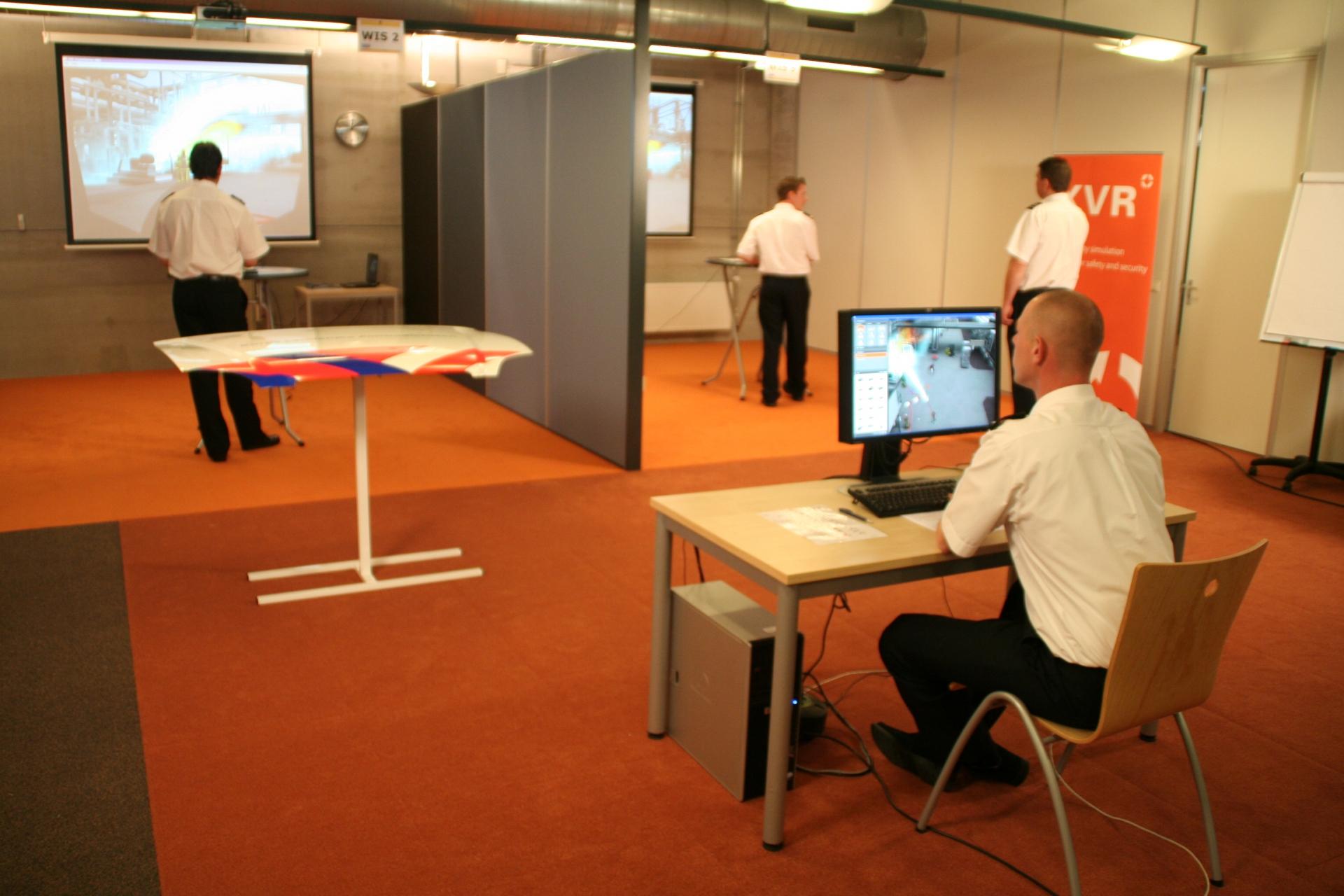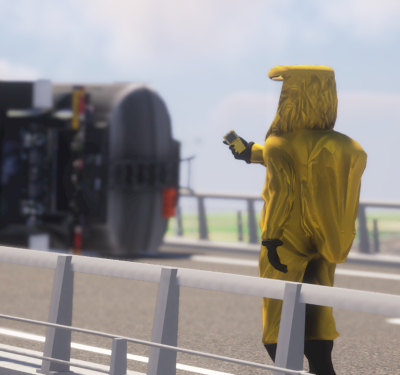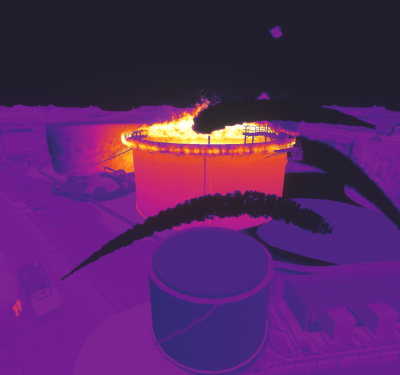Improving crisis decision making with XVR
By Dr Katherine Lamb - What can XVR be used for? How should you use it? For me, XVR provides a realistic, detailed and reactive visual stimulus, which you can use to deliver high quality incident command and crisis decision making training. In this blog post, I will explain my vision of what incident command training should be about, and how XVR can support this.
Traditionally, incident command training used ‘table-top’ exercises which were delivered utilising paper inject feeds or annotated photographs. But this two dimensional information can be interpreted differently by each student due to the lack of clarity
or detail around the information.
Visual Incident Information
By providing them with an fully interactive environment all the students can visualise the information in exactly the same way, as well as considering
additional or external factors such as adjacent building proximity, gradient of the land, wind direction or the weather.
I provide incident command training and assessments utilising the both XVR and the Effective Command methodology.
Decision Making training
I
developed the Effective Command model together with Dr David Launder of the South Australian Metropolitan Fire Service as a methodology that focuses on developing decision making behaviours, through the use of dilemma based training scenarios. The
model is supported by a series of web-based assessment tools and apps, and has been integrated as a fully compatible training methodology in conjunction with XVR. We have implemented the Effective Command Model and XVR into many international projects
and Fire Services including:
-
• Several UK Fire Services
• Estonian Academy of Security Sciences (SISEKAITSEAKADEEMIA) - Tallinn, Estonia
• Seoul Metropolitan Fire & Disaster Headquarters - Seoul, Korea
• IGNIS (International Wildfire Simulation Project)
• DRIVER (an EU-supported programme for innovation in Crisis Management and European Resilience)
The importance of thinking
I believe that thinking commanders come from thinking firefighters. For example, if you train firefighters to think during fire behaviour training, they will be able to read the fire. They will understand
what they’re looking at and they’ll make a decision about what firefighting tactics to apply. They won’t just open the door and deal with the fire from a fixed procedural perspective, they will read and understand it.
Developing Command Competence
Individuals
need to be given the opportunity to change the specific competences of knowledge, experience and skill, acquired from training or operational exposure, into command competence. Let them take that two dimensional information they’ve learnt and transpose
it into a 3D model in their heads. Let them take that knowledge, experience and skill, and landmark it, in such a way they remember it and importantly how it all fits together. That is an effective training methodology.
The complementary value of XVR
XVR
provides a cost effective way of delivering this kind of learning experience as it gives incident command trainers the opportunity to create a whole array of scenarios and train in a safe learning environment. We all learn best by making mistakes
and figuring out what we should do different next time, simulation provides this type of environment.
The scenarios created should always present a dilemma, as it will test the ability of the student to resolve an incident rather than by just
applying an organisational procedure by rote. Give them a scenario that requires them to make time-critical decisions. A scenario that allows you as the assessor or training officer to explore the decision making rationale of the student.
Testing the quality of decision making
XVR
provides a reactive training environment helps them cement their learning. If they make appropriate decisions, there must be appropriate outcomes at the end. If a BA crew is given a good quality brief and appropriately equipped with hose and sufficient
water, then the fire should go out. Conversely, if a poor brief is given and the fire continues to develop, then the commander needs to be given the opportunity to review their decisions and make tactical changes to the plan, based on the dynamically
changing visual cues.
By training people in this way, your students develop good situational awareness and are able to confidently lead their teams in a clear and cohesive way. By developing decision making skills in your commanders you are
equipping them to progress to the status of an ’All Hazards Commander’ a commander who has the confidence and competence to deal with the unexpected!
Dr Katherine Lamb is a respected authority on the Incident Command training and assessment. She worked as a research scientist before joining the Fire Service in 2004. She specialises in Incident Command and crisis decision making and published several scientific, peer-reviewed articles on the origin and application of competence assessment methodologies within the Fire Service environment. In 2015 and in collaboration with Dr David Launder from South Australian Fire Service, she has established EffectiveCommand.org. EffectiveCommand, is a charitable organization which has been set up to bring together best practices in Incident Command development and assessment.




.png?resolution=400x375)